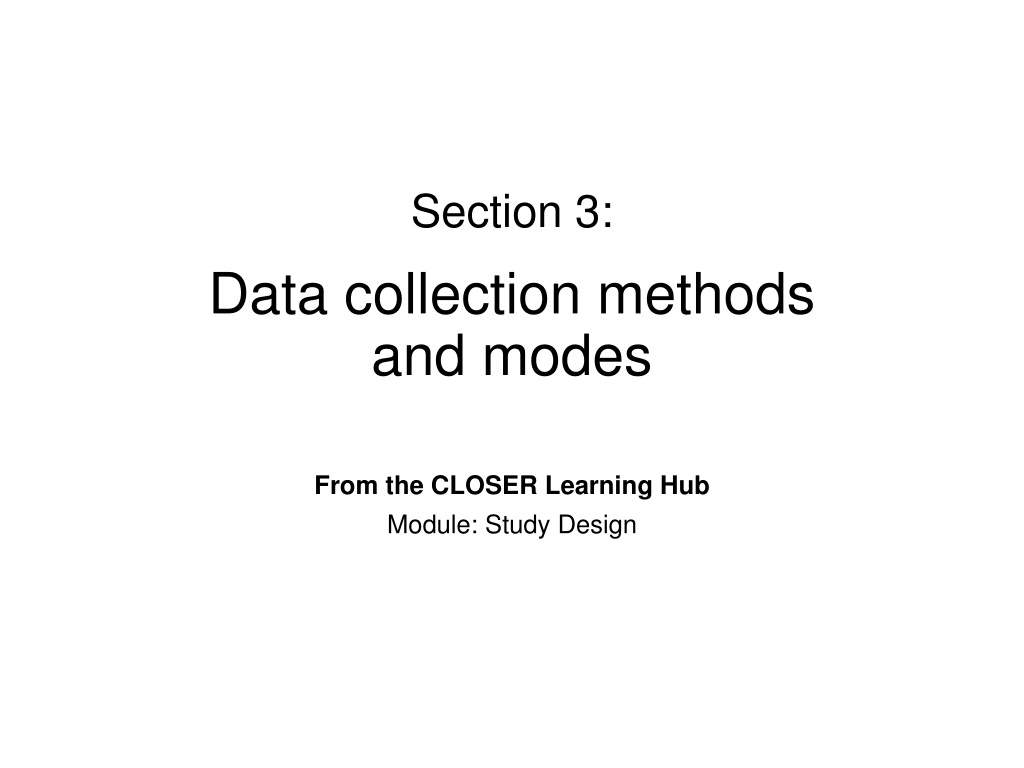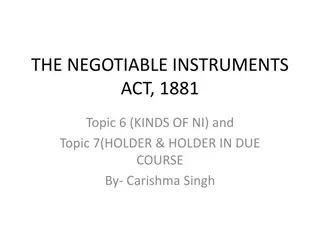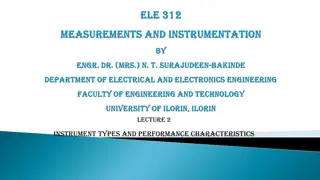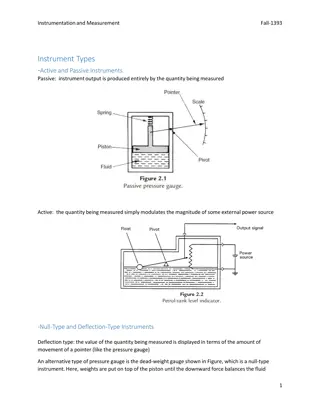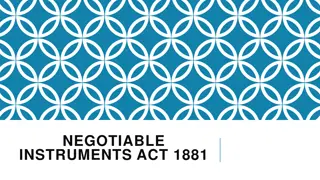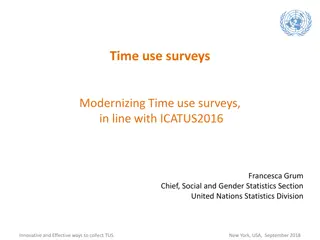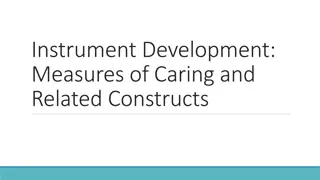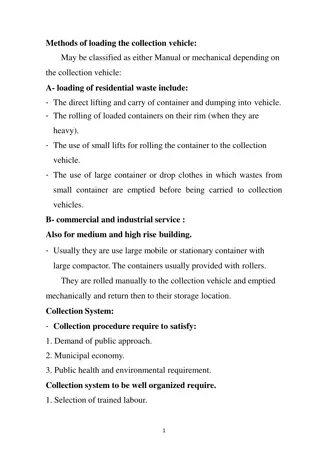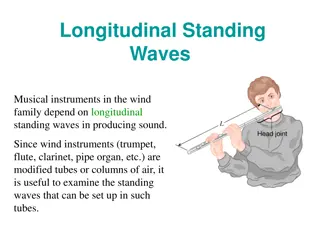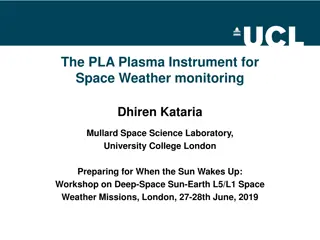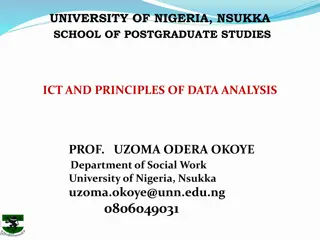Data Collection Methods and Instruments Overview
This section discusses various data collection methods and instruments used in research studies, such as questionnaires, cognitive assessments, and health assessments. It covers the types of data collected, instruments used, and examples from studies like the Millennium Cohort Study and British Cohort Study. The challenges of using new instruments compared to older ones are also highlighted.
Uploaded on Mar 03, 2025 | 0 Views
Download Presentation

Please find below an Image/Link to download the presentation.
The content on the website is provided AS IS for your information and personal use only. It may not be sold, licensed, or shared on other websites without obtaining consent from the author.If you encounter any issues during the download, it is possible that the publisher has removed the file from their server.
You are allowed to download the files provided on this website for personal or commercial use, subject to the condition that they are used lawfully. All files are the property of their respective owners.
The content on the website is provided AS IS for your information and personal use only. It may not be sold, licensed, or shared on other websites without obtaining consent from the author.
E N D
Presentation Transcript
Section 3: Data collection methods and modes From the CLOSER Learning Hub Module: Study Design
Data collection instruments Different tools used to collect different types of information (e.g. questionnaires, health assessments, cognitive tests) Respondents: studies may use the same or different instruments with different respondents (e.g. participant, parent, partner) Challenge: do new and improved instruments collect comparable data as older instruments?
Example: Millennium Cohort Study 2001-03 9 months 2003-05 2006 2008 2012-13 2014-15 3 5 7 11 14 respondent main Mother Mother Mother Mother Mother Cohort member respondents Cohort member secondary Cohort member Father Cohort member Cohort member Father Older siblings Teacher Father Teacher Father Teacher Father Older siblings Parents Questionnaires Cognitive assessments Physical measurements Time diary Activity monitor Saliva samples Questionnaires Cognitive assessments Physical measurements Activity monitor Milk teeth Questionnaires Cognitive assessments Physical measurements Cheek swab instruments Questionnaires Cognitive assessments Physical measurements Questionnaires Cognitive assessments Physical measurements survey Questionnaires response 18,552 15,590 15,246 13,857 13,287 11,726
Questionnaires Most common data collection instrument Can be administered by interviewer or by self- completion Question types can include: Yes/no Diaries or event calendars Open questions
Cognitive assessments Exercises that test how participants think and how their minds are developing (or declining) Standardised assessments such as British Ability Scales Must be age-appropriate
Example: Vocabulary test Vocabulary is an aspect of cognitive ability 1970 British Cohort Study gave a vocabulary test at age 16 participants were asked to give the meanings of words Given the same test at age 42 to see how vocabulary had changed Researchers compared vocabulary scores to lifelong reading habits
Health assessments Common health measures include height, weight, blood pressure Studies may periodically carry out more in- depth health assessments including lung function, heart rate, balance, grip strength Health assessments often carried out by nurses in participants homes or in clinics
Assessments of mental health and wellbeing Typically take the form of sets of questions Standardised assessments such as the Strengths and Difficulties Questionnaire Participants answers to multiple questions pooled to create an aggregate score for psychological distress or wellbeing
Example: Malaise Inventory Do you feel tired most of the time? Are you easily upset or irritated? Are you constantly keyed up and jittery? Do you often feel miserable or depressed? Does every little thing get on your nerves? Do you often get worried about things? Does your heart often race like mad? Do you often get into a violent rage? Do you often suddenly become scared for no reason?
Biological samples Blood, saliva, hair, milk teeth Genetic information is extracted from samples Biomarkers: objective measures of health Some studies collect biological samples from parents and children, allowing for studies of how genetic risk is passed between generations
Qualitative information Open-ended questions In-depth interviews Essays or other writing tasks Qualitative instruments used to gather information about subjects that are difficult to capture through quantitative means, for example social identity, future plans, feelings
Example: 1958 British birth cohort Imagine you are 25 essays written in 1965 at age 11 (13,600 responses) Imagine you are 60 essays written in 2008 at age 50 (7,400 responses) 90-minute in-depth qualitative interviews carried out with 230 participants at age 50
Modes of data collection Mode: method by which the data collection instruments are administered Face-to-face Telephone Post Online
Mixing modes of data collection Most studies use a mixture of modes Varying mode by sweep: e.g. carrying out one survey face-to-face and next by phone Varying within sweep: e.g. collecting some info by postal questionnaire and some in face-to-face interview, or asking some participants to take part online and others through face-to-face interviews Combining modes can save costs, however can also introduce measurement error
Linking to government records Enhance study info by asking for consent to link to government administrative records, e.g. Key Stage scores, tax and benefits records, or hospital admittance Some studies use linked data as fundamental part of study design Future linkage could include social media accounts, store rewards cards, smart energy readers
